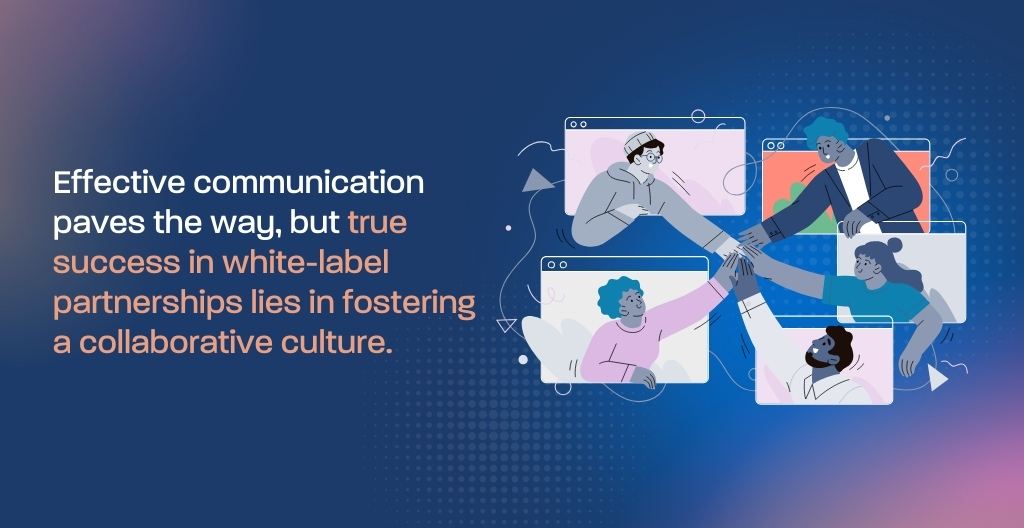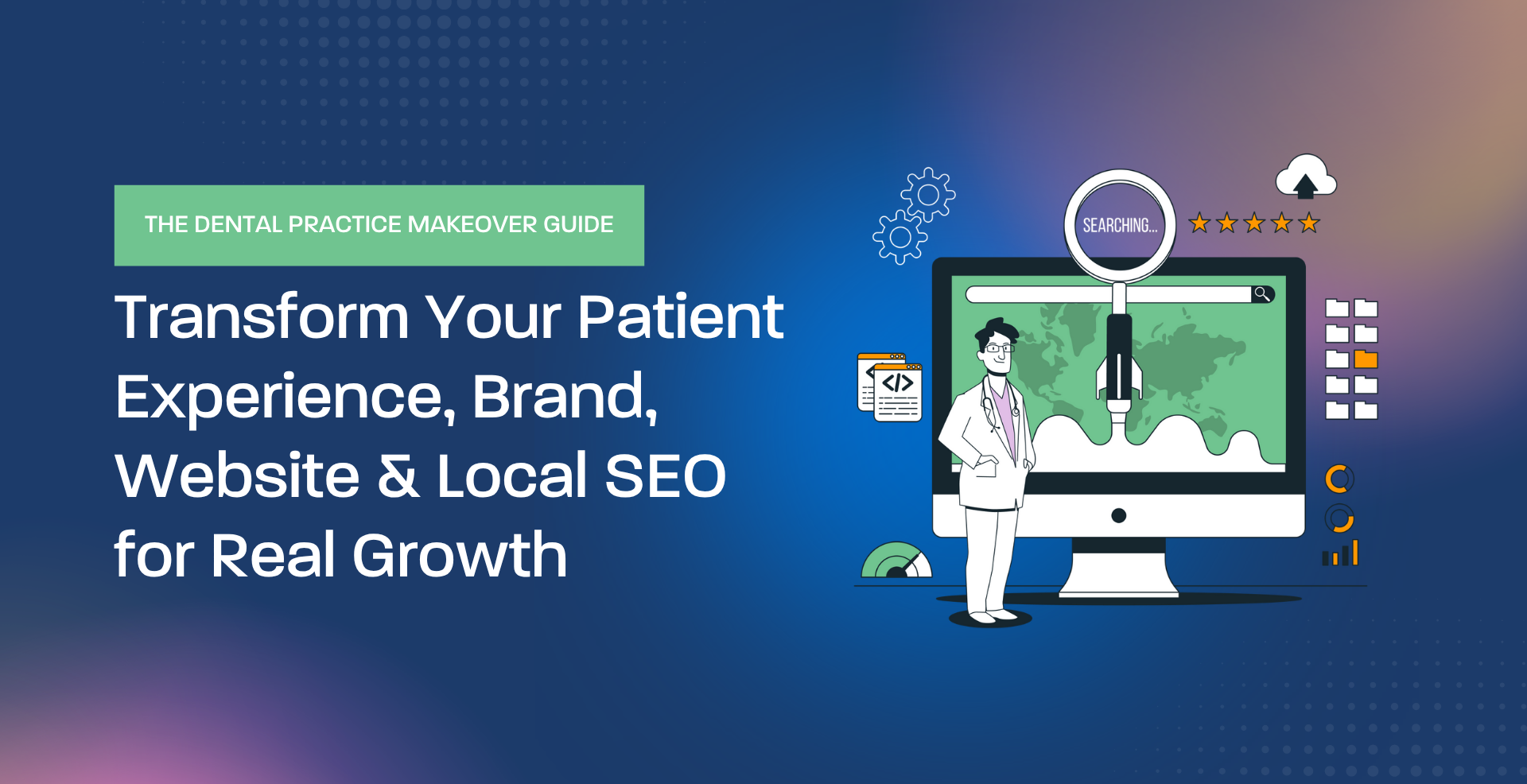Jessica, a creative director at a bustling signage design agency, dreamt of pushing the boundaries of website development for her clients. Her client, a renowned museum, wanted to create a responsive website with a great user experience for visitors. While Jessica’s team possessed strong design skills, their expertise lay in signage. Partnering with a white-label design company seemed like the perfect solution. However, initial conversations revealed communication gaps, leading to anxieties about project feasibility and the final product’s ability to meet the client’s vision. Jessica knew clear communication and collaboration were key to transforming this white-label partnership into a successful venture.
White-label partnerships offer agencies a unique opportunity to expand their service offerings and reach new audiences. However, the success of these partnerships hinges on a critical factor: effective communication and collaboration.
This blog looks into the importance of clear communication and outlines practical strategies to foster a collaborative environment within white-label partnerships. We’ll explore best practices for setting expectations, establishing open communication channels, and leveraging collaborative tools to ensure a smooth workflow.
Geeks For Growth has a free guide titled – A Guide to Successful white-label Partnerships which focuses on why agencies are increasingly turning to partners for design services, valuable insights into how these partnerships can be developed, and all you need to know before making the key decision to enter a white-label partnership with a partner like Geeks For Growth.
Laying the Foundation: Clear Communication Channels
At the heart of any successful partnership lies open and transparent communication and collaboration. In a white-label setting, this translates to establishing clear communication channels between your agency and your white-label partner. Here’s how to achieve that:
- Dedicated Communication Tools: Utilize project management software like Asana or Trello. These platforms provide a centralized hub for sharing briefs, tracking tasks, exchanging files, and keeping everyone on the same page. Additionally, consider instant messaging apps like Slack for quick updates and discussions.
- Regular Meetings: Schedule regular video conferences to maintain a personal touch and facilitate real-time discussions. This allows for clear communication of project updates, addressing concerns, and brainstorming solutions collaboratively. Aim for weekly or bi-weekly meetings, depending on project complexity.
- Client Briefings and Feedback Loops: Develop a clear process for client briefings. Ensure the white-label team thoroughly understands your client’s needs and target audience. Establish a feedback loop where your agency receives updates and can provide constructive feedback to ensure the white-label deliverables align with your client’s vision and brand standards.
Example: Imagine your agency partners with a white-label development team to build a custom e-commerce platform for a client. Through dedicated channels on Asana, you can share detailed client briefs outlining functionalities, target audience personas, and brand guidelines. Weekly video meetings allow for real-time progress updates, design discussions, and joint problem-solving. Additionally, you can establish a feedback loop where the white-label team shares wireframes for your review and you provide feedback before development begins.
Building Bridges: Collaboration Strategies for Success
Effective communication paves the way, but true success in white-label partnerships lies in fostering a collaborative culture. Here’s how to achieve this:
- Collaborative Culture: Create an environment built on trust and mutual respect. Encourage open communication, where both teams feel comfortable expressing ideas and concerns. Celebrate successes together and approach challenges as a united front.
- Joint Problem-Solving: Embrace a collaborative approach to problem-solving. Leverage the combined expertise of your agency and the white-label partner. Brainstorm solutions together, consider different perspectives, and choose the best course of action for the project.
- Shared Resources: Don’t be afraid to share resources when beneficial. This can include access to design assets, brand style guides, or even marketing materials. Sharing resources fosters a sense of partnership and streamlines the workflow.
- Decision-Making: Establish a clear decision-making process. Depending on the partnership structure, this might involve joint decision-making or assigning decision authority based on specific areas of expertise.
Example:
During the white-label e-commerce development project, a challenge arises regarding payment gateway integration. Both your team and the white-label development team brainstorm potential solutions, considering security, user experience, and processing fees. Through open communication, you reach a joint decision on the best integration option.

Weathering the Storm: Addressing Challenges
No partnership is without its challenges. Here’s how to navigate some common hurdles:
- Conflicting Work Styles: Recognize that different companies have different work styles. Communicate expectations clearly and find ways to bridge these gaps. Utilize project management tools to ensure everyone aligns with deadlines and communication preferences.
- Managing Conflicts: Disagreements are inevitable. Approach conflicts constructively, focusing on finding solutions rather than assigning blame. Utilize clear communication channels to discuss disagreements and reach a mutually agreeable resolution.
Example: Your agency’s preferred design approach might differ from the white-label development team’s usual workflow. By openly discussing these differences and establishing a clear process for design approval, you can ensure a smooth collaboration and avoid potential conflict.
Building for the Future: Reap the Rewards
By implementing effective communication and collaboration strategies, you can cultivate strong and successful white-label partnerships. These partnerships offer numerous benefits:
- Expanded Service Offerings: With the expertise of a white-label partner, you can offer clients a wider range of services, increasing your agency’s value proposition.
- Faster Time to Market: White-label solutions can help you deliver projects more efficiently, allowing you to capitalize on market opportunities and serve clients faster.
- Increased Revenue: By expanding your service offerings and delivering projects efficiently, you can generate new revenue streams and grow your agency’s bottom line.
- Enhanced Expertise: Through collaboration with your white-label partner, your team gains exposure to new skills and knowledge, fostering continuous learning and professional development.
- Stronger Client Relationships: Successful white-label partnerships empower you to deliver high-quality solutions and exceed client expectations, leading to stronger and more loyal client relationships.
Building strong white-label partnerships is an investment in your agency’s future. By prioritizing clear communication and collaboration, and addressing challenges constructively, you can unlock a world of possibilities. Remember, successful white-label partnerships are not built overnight. However, by implementing the strategies outlined in this blog, you can lay the foundation for long-term success and achieve remarkable results together with your white-label partners.
To learn more about the benefits and long-term impact of white-label partnerships, the key factors in forming and sustaining partnerships, and how to strike the right balance between design, creativity, and client requirements, you can get GeeksForgrowth’s whitepaper for free!
Do you need a white-label partner who will do all the work for you while delivering quality services under your brand name? Geeks For Growth is your efficient white-label partner that will help your agency shine with premium branding and design services.







